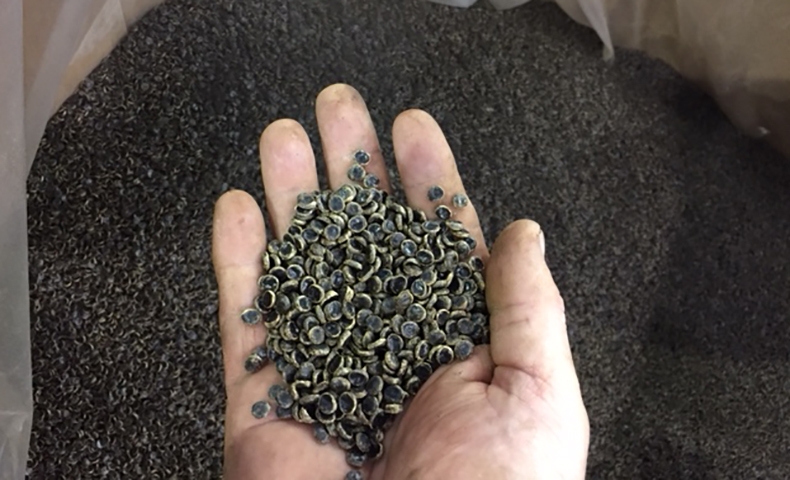
Features
Bioeconomy
Research & Innovation
Lignin pellets can be an bio-alternative to plastic
Apr. 13, 2018 - Domtar says it has led advancements in lignin separation and the development of lignin-based materials in an effort to develop a bio-alternative to petroleum-based materials.
April 13, 2018 By Domtar

No longer viewed as merely a byproduct of paper-making, lignin is finding new uses as a green replacement for certain chemicals and materials. In fact, lignin-based biomaterials, including lignin pellets, have the potential to be used in a wide array of applications.
The use of lignin as a biomaterial has gained momentum in the past few years, beginning with Domtar’s installation of a commercial-scale lignin separation plant in Plymouth, N.C., in 2013. Today, Domtar is using extruding equipment to deliver commercial-grade lignin in dried, compounded and modified lignin granules/pellets, as well as lignin-polymer blends.
Its research team collaborated with the National Research Council Canada (NRC) in Boucherville, Que., to develop lignin pellets and lignin-polymer compound pellets. Lignin pellets are changing the conversation about the use of biomaterials in industrial products. An early trial with agricultural films is proving a success, and more projects are underway.
Domtar recently installed a demonstration plant at a mill in Ontario to showcase lignin pellets as a bioalternative to plastic, chemicals and other industrial products. This project has garnered interest from several industries, as well as support from provincial and federal governments, specifically through Natural Resources Canada’s Investments in Forest Industry Transformation program.
“Lignin has several advantages in sustainability, supply, technical features and, potentially, cost,” said Dr. Minh-Tan Ton-That, a senior officer at the NRC. “It can be an attractive alternative to petroleum-based thermoplastics with a short time to market.”
Lignin is well suited for bioalternative applications because it’s an abundant non-petroleum source of aromatic compounds of high molecular weight, including phenolics and alcohols. Today, nearly all commercial phenolic compounds and polyols are derived from petroleum, but isolated lignins from woody biomass provide an economically attractive bioalternative that is renewable and sustainable.
Domtar’s reactive extrusion process simultaneously dries lignin into fused pellets and, if needed, compounds lignin into several upgraded forms that are drop-in ready for downstream users’ processes. The production capacity is up to 0.75 tonnes per hour. The technology can compound petroleum-based resins and polymers with lignin to create pellets with lignin content anywhere between 5 and 95 per cent. It also can create pellets with moisture content as low as 2 per cent while producing a minimum amount of volatile organic compounds.
With its extruding process, Domtar produces different lignin blends, including:
• Lignin pellets that can be dry blended with thermoplastic pellets
• Lignin master batch pellets
• Lignin-polymer compound pellets
Applications for lignin pellets
With assistance from the NRC, Domtar developers are making drop-in ready lignin-thermoplastic pellets. In one trial, these pellets were used in agricultural mulch films that are being tested on farms.
John Zandstra conducts research on fruit and vegetable cropping systems at the University of Guelph’s Ridgetown Campus in Ontario. In an interview with Domtar, he said that lignin-based films have potential as a cost-competitive, sustainable solution for farmers growing fresh-market crops, such as peppers, sweet corn and melons.
In addition to films, manufacturers could use lignin pellets to create bags and injection-molded products. Industry and university researchers are exploring more applications for lignin and lignin-polymer pellets. Engagement from manufacturers will enhance the process.
This post was originally published by the Domtar Newsroom.
Print this page